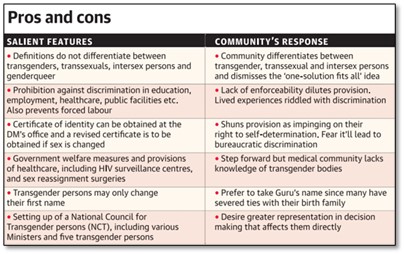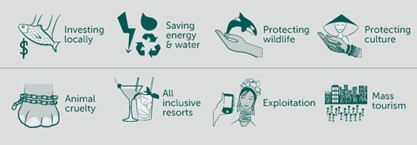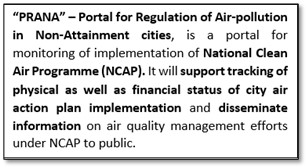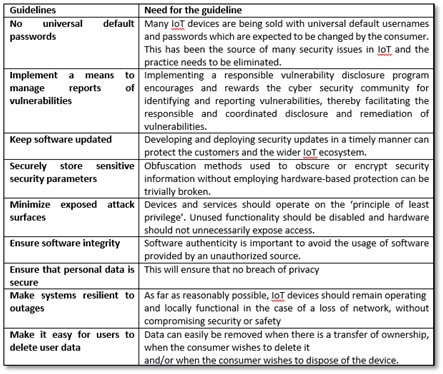Wednesday, 12th January 2022
The Global Risks Report 2022
In News
The World Economic Forum (WEF) has released the Global Risks Report 2022 that presents the results of the latest Global Risks Perception Survey (GRPS), followed by an analysis of key risks emanating from current economic, societal, environmental and technological tensions.
Various risks plaguing the World

How the world dealt with the risks?
- Two interlinked factors were critical for effective management of the pandemic:
- First, the readiness of governments to adjust and modify response strategies according to changing circumstances;
- Second, their ability to maintain societal trust through principled decisions and effective communication.
- For governments, balancing costs, regulating for resilience and adjusting data-sharing arrangements to ensure sharper crisis management are key to galvanizing stronger interaction between public and private sectors.
- Businesses—recognizing that better national-level preparedness is critical for planning, investing and executing their strategies—can leverage opportunities in areas such as supply chains, codes of conduct within their industry and inclusion of a resilience dimension into workforce benefit offerings.
- Communities can help local governments to join up with national efforts, improve communication and support grassroots resilience efforts.
- At an organizational level, strategies such as grounding resilience analyses in key delivery requirements, appreciating systemic vulnerabilities and embracing a diversity of approaches can help leaders build better resilience as well.

Sources:
Survey of Defence land
In News
Ministry of Defence has recently completed the largest digital survey of defence land in the country since independence, which was first started in October 2018
About the News
- For the first time after independence, entire defence land has been surveyed using the latest survey technology in association with the Revenue authorities of several state governments.
- This came after 9622.807 acres of defence land was reported to be encroached in the country.
What are the important findings of the survey?
- According to findings defence ministry is the largest landowner in the country, with about 99 lakh acres under it.
- Of this, approximately 61 lakh acres is held within the 62 notified cantonments and remaining 16.38 lakh acres is spread across the country and outside the cantonments.
- Nearly 18,000 acres is either state-hired land or is proposed for deletion from records on account of its being transferred to other departments within the government.
- The land held by the Defence Ministry includes firing ranges, test sites and land used for other purposes.

Why is the survey important?
- A clear demarcation and boundary survey of defence lands and fixing of the boundaries is necessary for its protection and safeguarding of the title of the MOD.
- It will go a long way in updation of land records, maps and helps in preventing encroachment.
- It will replace the time-consuming, manual effort by Surveyor General of India in a matter of weeks, which earlier used to take years.
- For the first time, a drone imagery-based survey technology was used in Rajasthan to document area spread over lakhs of acres
- It is expected to reduce boundary and legal disputes among stakeholders while aiding the process of revenue departments of various state governments.
What are the major Challenges?
- An integrated satellite imagery of defence land pockets for real-time change detection system for encroachments is a challenging and costly
- Preparing and updating a Geo-referenced and digitised shape files for quick decision-making is itself a mammoth task.
- Close coordination with a lot of stakeholders, including state governments is challenge.
What can be done?
- Regular updation of survey with modern surveying technology to be utilised for faster decision making.
- Creation of an integrated data repository of digital survey and records for faster decision making in land transfer, land swap or to ensure that there is no encroachment.
Sources:
Separate jail wards and facilities for Transgender persons
In News
The Union Home Ministry has recently sent advisory to States/UTs to ensure privacy and dignity of their transgender inmates.
About the News
- As per the advisory, transgender inmates will get a separate enclosure/ward in prisons to ensure their right to privacy and dignity.
- This is in accordance with the Transgender Persons (Protection of Rights) Act, 2019 according to which a person recognised as a transgender has the right to self-perceived gender identity.

Advisory Guidelines
- Avoids Isolation: While providing the exclusive space for transmen and transwomen, prison officials would ensure that they are not completely isolated from others.
- Access to Identity Certificate: While respecting the self-identity at all times in admission procedures, medical examination, search, lodging, clothing, treatment and care, the jail officials should facilitate their access to the identity certificate by helping them apply/register on the national portal for them.
- Separate Category in Register: Transgender must be included as a separate category in the prison admission register and management system.
- Help rendered to apply for a change in gender identity: If the court warrant does not mention the self-identified gender or if the gender is disputed by the person, then the Jail Superintendent should assist the person in making an application for a change in gender identity with the help of the legal services authorities.
- Search protocol: A procedure for searches has been laid out according to which the search will be carried out by a person of their preferred gender or by a trained medical professional or a paramedic trained in conducting searches who will ensure the safety, privacy and dignity of the person being searched.
- Right to dignity: Due care must be taken by the prison authorities that these separate facilities may not result in their complete isolation or propagate social stigma among such prisoners. There should be adequate preservation of right to privacy and dignity in regard to separate toilets for transmen and transwomen as well as shower facilities.

Source:
National Youth Day
January 12 is celebrated as National Youth Day in honour of Swami Vivekananda. Swami Vivekananda was born Narendranath Datta on January 12, 1863, in Kolkata, West Bengal. He was always inclined towards spirituality. He practised meditation from a very early age and also joined the Brahmo Samaj movement for a certain period. One of the greatest patriots, he was also credited for introducing Indian philosophies of Vedanta and Yoga to the western world. Vivekananda propounded the importance of Education in building a nation. He specially emphasized on education being relevant to the common masses. Vivekananda was an ardent disciple of Sri Ramakrishna Paramahansa and worked for the revival of Hinduism in India. His famous speech at the World Parliament of Religion in Chicago in 1893 still remembered- "Sisters and Brothers of America." The teachings of Swami Vivekananda are listed in the book called- “The Complete Works of Swami Vivekananda" which is available in nine volumes.

Source:
Cotton Pricing
In News
The Indian textile industry has begun expressing concern over soaring cotton prices in global and domestic markets.
How is Cotton Price determined in India?
- Every year before commencement of the Cotton Season (October to September), Ministry of Agriculture, Government of India fixes the Minimum Support Price (MSP) of two varieties of seed cotton (kapas) to protect the interest of cotton farmers.
- While recommending MSPs, Commission on Agricultural Costs & Prices (CACP) considers important factors like cost of production, overall demand-supply conditions, domestic and international prices, inter-crop price, terms of trade between agricultural and non-agricultural sectors, the likely effect on the rest of the economy, besides ensuring rational utilization of land, water and other production resources and a minimum of 50 percent as the margin over cost of production in case of MSPs.
- The Cotton Corporation of India (CCI), being the single largest buyer and seller of cotton, has enormous power to determine prices in the mandi and the market. Everyday CCI announces a selling price which effectively becomes the maximum price for the rest of the market.

What are the factors that influence the price of Cotton textile?
- Domestic Economy: The domestic demand supply scenario, inter-crop price parity, cost of production, and international price situation are the major factors that influencing prices in the market.
- Production Factors: Weather, pests, diseases and other risk factors associated with agricultural crops also have a bearing on cotton production and hence influence the prices.
- Support Programmes: Government policies on import, export, and minimum support price are significant influencers of cotton prices.
- Domestic Market Prices: Cotton yarn prices in different markets across the country show a high correlation of above 90% with India's raw cotton prices. Global trade is particularly important for cotton.
- Global commodities markets, where cotton is traded among buyers and sellers on a daily basis, would have the heaviest influence on the price of cotton. The markets not only represent current, real-time supply and demand, but can also fluctuate based on events and other factors that will influence future markets.
- Cotton Product features: As with any commodity, traders get the best prices they can for cotton based on the quality of the crop. Cotton is judged on the basis of its colour, quality and fibre properties.
- WTO Subsidies: Cotton subsidies have remained a contentious issue in international trade and negotiations at the World Trade Organization (WTO). Farmers of developing and least-developed countries (LDCs) complain that the massive support provided by developed countries, especially the United States, has rendered cotton production uncompetitive in the Global South.
Reasons for the recent price rise?
- The removal of cotton from the Essential Commodities Act has also led to the industry’s woes as it has paved the way for multinational cotton traders/ hoarders to dominate the Indian cotton economy. They procure cotton in bulk during peak-season at cheaper prices, export and create scarcity and then speculate the prices during off-season.
- US sanction on Xinjiang Chinese cotton which accounts for 10% of the world cotton production. This has resulted in not only having a shortage of cotton in the international market but also abnormal speculation in the cotton prices.
- One of the major reasons for the cotton price volatility is due to the imposition of 5% Basic Customs Duty (BCD), 5% Agriculture Infrastructure Development Cess (AIDC) and 10% Social Welfare Cess imposed on these components in the Union Budget 2021-22 which amounts to imposition of an overall import duty of 11%.
- Import duty of 11 % on raw cotton also erodes the competitiveness of the value-added segments that have a business size of around Rs 50,000 crores in exports and Rs 25,000 crores in the domestic market.
- The textile industry in India is facing four major problems in cotton front – shortfall in and uncertainty about cotton production, very low cotton yields per hectare, quality of cotton, and cultivation of large number of Bt cotton including varieties.
- Spurt in cotton prices can also be due to the bulk discount offered by the Cotton Corporation of India (CCI) to the traders who procured almost 70% of Minimum Support Price (MSP) cotton auctioned by CCI at a lower rate during the cotton season due to availability of 90 days free period and thereafter speculated the market.
What is the impact of the rise in Cotton Prices?
- High cotton prices makes the downstream industry, especially the spinning sector, vulnerable as it increases the cost of yarn prices and makes them quite unpredictable in the highly cost-competitive international market.
- This chaos in the downstream segments pressurizes the Government to bring stability in the yarn prices which is not possible until and unless there is stability in the raw cotton prices.
- The cotton value chain consumes only around 1/3rd of the cotton while 2/3rd of the cotton is procured by multinational traders and CCI, making Indian cotton farmers to suffer due to market dynamics.
- These farmers often suffer high levels of debt, in part due to high input costs (such as pesticides and fertilisers). Along with other market factors, this can contribute to a perpetual cycle of poverty for many.
- Cotton in India is grown by around 5.8 mln farmers – predominantly smallholders – and 50 mln people indirectly depend on the cotton sector for their livelihood. Therefore, the prices of this crop also has a large social impact, both negative and positive.
- Volatile cotton prices and uncertain market for farmers makes cotton a less attractive crop to grow.
What can be done to manage the fluctuations in the Cotton Prices?
- Procurement during Peak Season: If MSME spinning mills can source cotton during peak season (November to March), farmers can get better prices and avoid MSP operation. This would also enable the cotton value chain to achieve 2-3% additional growth.
- Bt Cotton: Introduction of Bt Cotton showed an improvement in the livelihood of some farmers. It helped farmers to increase yields and adopt more sustainable farming practices, as this type of cotton requires less pesticides, leading to reduction in the cost of cultivation.
- However, the effect of Bt cotton on the livelihood of farmers is still controversial, as in some other cases, especially in rainfed areas, it comes with a high cost of production and requires specific farming practices, such as irrigation and fertilizer application at specific times.
- The Southern India Mills Association (SIMA) has appealed to the Prime Minister to introduce an innovative Cotton Procurement and Trading Scheme for Cotton Corporation of India for price stability. It can be done by providing government funding to procure 10 to 15 per cent of the cotton that arrive in the market during the season and by creating a strategic stock for price stability, selling cotton only to actual users in a staggered manner till the end of the season and maintaining some buffer stock for the next season.
- Commodity futures: To protect stakeholders buyers, sellers and consumers from volatility of the cotton price, trade through commodity futures exchange can be an alternative, which would also provide a platform for risk management.
- Integrated Cotton Cultivation (Contract Farming): To give a boost to cotton production through Contract Farming, CCI is undertaking contract farming programme, which in extended form benefit both the cotton growers through low cost of production and higher productivity and the textile mills with availability of quality cotton comparable with international standards.
There is nothing wrong with cotton prices going up, and farmers making a decent profit for a change. The issue is to align policies such that the farmers can make their money, even as the textiles industry is assured of raw material and inflation in textiles kept under control.
Question: Discuss the reasons for fluctuation in cotton price. What can be the steps to manage these fluctuations?
Sources:
Largest 'Sea Dragon'
This is image of biggest and most complete skeleton of its kind found to date in the UK. Palaeontologists have discovered one of the greatest finds of the 21st century in the UK — a giant sea dragon. It is the biggest and most complete skeleton of its kind found to date in the UK, and is believed to be the first ichthyosaur of its species. Dated to be at least 180 million years old, the skeleton is around 10 meters in length with a skull weighing approximately one ton, paleontologists have dubbed it the most complete large ichthyosaur ever found in Britain. Ichthyosaurs first appeared around 250 million years ago and went extinct 90 million years ago. An extraordinary group of marine reptiles, these animals varied in size from 1 to more than 25 meters in length and resembled dolphins in general body shape. Due to their massive teeth and eyes, they are called sea dragons.
Source:
Comet’s Head & Tail
- Context: NASA has come up with a detailed explanation for multi-chromatic behavior of the Comet Leonard.
- Comets are frozen leftovers from the formation of the solar system, composed of dust, rock, and ices and range from a few miles to tens of miles wide.
- As a comet approaches the sun, it heats up and its ices turn to gas, producing a fuzzy atmosphere known as the coma.
- The atmosphere that has carbon-based molecules are in turn bombarded with ultraviolet light from the sun which breaks it apart, stripping off outer pieces generating a simple but fragile molecule known as dicarbon (C2).
- Photons can knock these dicarbon molecules into an excited state that reverts to its ground state by emitting a photon (commonly one of green light) which explains the green color of comet comas.
- The lifetime of a dicarbon molecule bathed in sunlight is about 44 hours. In that time, the molecules might travel quite far for about 80,000 miles or beyond. However, the comet tails stretch millions of miles which indicates little or no dicarbon, and thus no green glow.

Source:
Long Fragrant Tradition: Kannauj
- Context: Kannauj has been able to preserve its age-old tradition of fragrance which gives its population a unique occupation.
- With its fertile alluvial soil conducive to growing flowers, Kannauj is believed to have been manufacturing fragrances for centuries, say since the Gupta age (finds mention in Harshacharitra by Banabhatta).
- The city has been distilling itra, or attar (perfume) via preventing roses, jasmines, and other flowers from giving up their fragrance, by quickly bottling them up with essential oils.
- But most famously, the town has been able to bottle petrichor, the smell of rain on earth, which they call “mitti ka attar”, the scent of soil.
- The attar made here is rich, with no dilution and unlike alcohol-based perfumes, the fragrance is heavier but quieter, and lasts longer.
- Traditional methods known as ‘deg bhapka’ employing no electricity or heavy machinery is used for fragrance extraction.
- The value of perfume business in Kannauj is over 1,200 croreswith nearly 80% of its population directly or indirectly involved in the industry.
- Kannauj perfume has received Geographical Indication tag in 2014.

Source:
P-81 Aircraft
- Context: Indian Navy's Boeing P-8I aircraft has recently commenced operations from INS Hansa.
- The P-8I is an anti-submarine aircraft designed for long-range anti-submarine warfare (ASW), anti-surface warfare (ASuW), and intelligence, surveillance and reconnaissance (ISR) missions.
- P-8I will replace the ageing fleet of Tupolev Tu-142 aircraft that are in service with the Indian Navy.
- It has maximum speed of 907 kmph and an operating range of 1,200 nautical miles.
- It is capable of detecting threats and neutralizing them even far before they come anywhere near Indian shores.
- P-8I is manufactured by Boeing (US) for the Indian Navy and is a variant of the P-8A Poseidon operated by the US Navy.
- A fleet of the P-8Is was deployed to carry out surveillance on the movement of Chinese troops in eastern Ladakh in 2020.

Source:
‘Trads’ and the Anti-nationalism
- Context: The Delhi Police has for the first time used the term “Trad” in recent GitHub case.
- ‘Trad’ (short for traditionalists) refers to a group of individuals (traditional and conservative) on social media that target minorities like Dalits, Muslims and women on public platforms like Twitter, Telegram etc.
- Named ‘Trads’ and ‘Raitas’, these online groups are populated by Hindu Right-wing individuals, but differ significantly on the degrees of ‘extremism’ they propound.
- The Raitas (a pun on the ‘raita failana’ idiom, which means to make a mess) are comparatively progressive, pro-development and pro-Dalit rights.
- While the Raitas accuse the Trads of being anti-Dalit and anti-Hindu, the Trads believe the Raitas are too ‘liberal’ and ‘Westernised’.

Source:
The Pros and Cons of Big data used as economic signal: LM
Essence: In times like current pandemic Government needs to quickly know the extent to which economy has been affected. Unlike official government data, new forms of big data like mobile mobility data from Google, night lights captured by satellites and e-way bills are quickly available and are being used to track economic activities.
However, as we adapt to the pandemic, correlation of mobile mobility data with economic activity weakens. Similarly cloud cover which blocks view of satellites casts doubt over accuracy of night light data and exclusion of services renders conclusions from e-way bill data questionable. Making sense of data with different frequencies and different seasonality patterns poses another challenge.
Utility of these big data in making tentative guesses about economic growth is beyond question. But the author cautions that lots of tricky issues need to be addressed before these big data can replace official data for long term decision making.
Why should you read this article?
- To know how availability of new forms of big data helps in decision making in uncertain times like Pandemic.
- To understand limitation of these data forms.
- This will help you write pros and cons of using big data.
Source:
Tackling India’s unemployment wave: IE
Essence: The article reiterates the fact that the Covid cannot be blamed in entirety for the unemployment but it is a prolonged problem with which India is suffering. The problem is graver in urban areas and varies across the states, age brackets and gender. As per NSSO the unemployment rate is higher amongst youth and that too educated ones. Women workers also felt the burnt for not getting new avenues when they got displaced due to mechanization of agriculture.
For the situation to improve the private investments have to pick up which stands at 27.2 percent in 2020. This has formed a vicious circle where companies are not investing due to weak demand in the market which in turn is due to joblessness. All of this is leading to rise in inequalities and a stage where the quality of economy recovery is questioned.
Why you should read this article?
- To understand the fact that unemployment problem in India is a prolonged one.
- To understand the variations in unemployment across genders, area and sectors.
- To understand how a vicious cycle has been formed which raises a concern about the quality of economic recovery.
- The article provide fodder points to understand and substantiate answers with respect to unemployment situation in India.
Source:
Hate Speech in the time of free speech: TH
Essence: The cases of ‘hate speech’, especially against minorities in India have been on the rise. The Supreme Court has recently asked to revise the legislative provisions to prevent cases of hate speech. Through various judgements, the Supreme Court and many High Courts have stated that hate speech promotes enmity between different classes and communities.
But despite guidance from judiciary, interpretation of Hate Speech has been problematic. This has been seen especially in cases related to digital medium. Unfortunately, various recommendations of Law Commission etc. has not been acted upon. The article suggests to consider International Standards as model to combat modern- hate speech which includes Internet and social media.
Why you should read this article?
- To understand why is it important to have specific legislative provisions in order to combat the rising cases of hate speech.
- The article becomes very useful for examination (GS I and GS II) as it lists down various judicial judgements and recommendations with respect to Hate Speech at one place.
Source:
Sustainable Tourism
Background
- Tourism is one of the fastest growing sectors in the world and can provide an essential economic boost for countries pitching themselves as holiday destinations. Tourism, however, has historically had devastating effects on the environment, people and their cultural identities.
- Volunteer in Belize is a programme of volunteering for conservation of ecology in Belize (a country in Central America), which gives an opportunity to conserve ecology along with tourism.
About the Programme
- Belize is encouraging tourists to be a volunteer for sustainable growth for programs like whale, ocean and other biodiversity conservation programs. The volunteers are also being given a chance for enjoying the hospitality during their holidays and travel.
- The programme advocates for more responsible travel decisions through online content and organizing sustainable and ethical holiday packages.
- Volunteers carry out important field research, education and conservation actions that are making a significant contribution to the project’s mission: protecting wildlife and its habitats, raising awareness, empowering local communities and sustaining natural resources..
- By 2029, it is expected to account for about 53 million jobs according to the IBEF (India Brand Equity Foundation) reports. The above idea of responsible tourism can harness more potential than the estimates if implemented.
- The project manages 22,000 acres of forest that forms an important wildlife corridor, and has been awarded the United Nations Development Program’s prestigious Equator Prize for sustainable development.

Quote: “Our biggest challenge in this new century is to take an idea that seems abstract – sustainable development – and turn it into a reality for all the world’s people”
- Kofi Annan
Source:
Share the article
Get Latest Updates on Offers, Event dates, and free Mentorship sessions.

Get in touch with our Expert Academic Counsellors 👋
FAQs
UPSC Daily Current Affairs focuses on learning current events on a daily basis. An aspirant needs to study regular and updated information about current events, news, and relevant topics that are important for UPSC aspirants. It covers national and international affairs, government policies, socio-economic issues, science and technology advancements, and more.
UPSC Daily Current Affairs provides aspirants with a concise and comprehensive overview of the latest happenings and developments across various fields. It helps aspirants stay updated with current affairs and provides them with valuable insights and analysis, which are essential for answering questions in the UPSC examinations. It enhances their knowledge, analytical skills, and ability to connect current affairs with the UPSC syllabus.
UPSC Daily Current Affairs covers a wide range of topics, including politics, economics, science and technology, environment, social issues, governance, international relations, and more. It offers news summaries, in-depth analyses, editorials, opinion pieces, and relevant study materials. It also provides practice questions and quizzes to help aspirants test their understanding of current affairs.
Edukemy's UPSC Daily Current Affairs can be accessed through:
- UPSC Daily Current Affairs can be accessed through Current Affairs tab at the top of the Main Page of Edukemy.
- Edukemy Mobile app: The Daily Current Affairs can also be access through Edukemy Mobile App.
- Social media: Follow Edukemy’s official social media accounts or pages that provide UPSC Daily Current Affairs updates, including Facebook, Twitter, or Telegram channels.





